Green Infrastructure: Opinion Mining and Construction Material Reuse Optimization Portal
Abstract
1. Introduction
1.1. Data-Driven Solutions for the Development of Green Civil Infrastructure
- What are the most commonly used keywords related to green infrastructure on Google?
- How is the attractiveness of green infrastructure related to micro-, meso-, and macro-environmental indicators?
- How can opinion mining be used to predict how often people use words related to the attractiveness of green infrastructure in their online communication?
- How well do opinion mining models perform across different countries and cities?
1.2. Construction Waste Management Tools
- How can a digital portal optimize the matching process between supply and demand of reused construction materials?
- How can a digital portal be designed to recommend the most rational reused construction materials to customers based on economic, distance, time, quality, environmental, and other relevant criteria?
2. Materials and Methods
2.1. The GREEN Method: Opinion Mining to Determine the Attractiveness of Green Infrastructure
2.2. Construction Material Reuse Optimization (SOLUTION) Portal
- Input data tables: These provide general information about the proposed reused construction materials.
- Construction materials assessment tables: These provide quantitative and conceptual information about alternative options of reused construction materials.
- Multi-criteria and multivariate design tables: These include quantitative and conceptual information on links between the reused construction materials, their compatibility, and possible combinations.
- The alternative option generation model for reused construction materials;
- The initial criteria-weight-setting model (using expert assessment methods);
- The criteria-weight-setting model;
- The multivariate design model for reused construction materials;
- The multiple-criteria analysis and priority-setting model for reused construction materials;
- The utility-degree-setting model for reused construction materials [33];
- The recommender model.
3. Results and Discussion
3.1. Attractiveness of Green Infrastructure
- Aesthetic value: visual quality, environmental quality, cultural/historical value, and artistic value;
- Sense of belonging: safety, well-being, and familiarity;
- Leisure: picnic, excursion, lunch break, meditation, getaway, stroll, walking, dog walking, and sunbathing;
- Recreation: gardening, farming, flower picking, fishing, camping, and playing;
- Sports: running, jogging, cycling, rowing, swimming, and hiking;
- Events: hobby, festival, musical event, social event, and outdoor lessons.
3.2. Use of Construction Material Reuse Optimization (SOLUTION) Portal
- It collects information and data on construction material waste from construction sites, warehouses, landfills, recycling and trading sites, and residents and presents it on a unified digital platform.
- On the platform, the users can search for information about the offered unused construction materials and find relevant suppliers.
- The search subsystem allows users to search, filter, and compare thousands of building material alternatives based on price, location, delivery time, and other parameters; contact suppliers; and order the building materials they need.
- The platform performs multi-criteria and multi-variate analyses and selects the most rational alternatives to make the reuse of construction material waste more efficient and at the same time reduce transportation costs and emissions along the entire value chain.
- The platform helps to offer unused construction materials and construction waste to the market, thereby contributing to the reuse of construction materials and waste reduction, cooperation for sustainability in the field of construction and demolition works.
- It allows users to find, filter, and compare thousands of alternative reused building materials by price, location, collection time, and other parameters; contact suppliers; and order any building materials they need.
- The platform performs multiple-criteria and multi-variate analyses, calculates utility degrees, and selects the most rational alternatives to ensure the more efficient reuse of second-hand building materials and, at the same time, reduce delivery costs and pollution emissions.
- Environmental benefits include reduced construction waste, lower CO2 emissions by avoiding the manufacturing and transport of new materials, and decreased demand for virgin resources like timber, metals, and aggregates.
- Economic benefits include cost savings from cheaper reused materials, reduced disposal costs for sellers, easier sourcing of rare or discontinued items, and improved management of surplus materials across construction projects.
- Social benefits include support for small-scale or budget-friendly projects, the stimulation of local reuse and deconstruction businesses, and the promotion of sustainable building practices based on circular economy principles.
4. Conclusions
4.1. Theoretical Contribution
4.2. Practical Significance
4.3. Limitations and Future Research Directions
- Expanding the analysis to include a broader range of macro- and meso-environment indicators—beyond the current 71 and 22, respectively—to provide a more comprehensive understanding of the factors influencing green infrastructure development needs and priorities.
- Expanding the GEKA system by developing Contextual Memory, Hierarchical Memory Retrieval, and Focus Modes, as well as Multimodal Interactions, Personalized Sentiment Models, Real-time Adaptive Interfaces, Ambiguity Handling, and Temporal Context subsystems.
- Longitudinal studies tracking the actual implementation of green infrastructure initiatives in countries and cities with high AGI keyword densities, as predicted by the models, to validate the practical implications of increased online search interest.
- Integrating the SOLUTION Portal’s material reuse optimization capabilities with the AGI keyword analysis, which could lead to opinion-based reuse of construction materials; this future research direction also corresponds to expert evaluation indicating that the portal could provide more criteria to reflect real-world decision-making needs.
Supplementary Materials
Author Contributions
Funding
Data Availability Statement
Conflicts of Interest
References
- Liu, T.Y.; Chen, P.H.; Chou, N.N. Comparison of assessment systems for green building and green civil infrastructure. Sustainability 2019, 11, 2117. [Google Scholar] [CrossRef]
- Fu, X.; Hopton, M.E.; Wang, X. Assessment of green infrastructure performance through an urban resilience lens. J. Clean. Prod. 2021, 289, 125146. [Google Scholar] [CrossRef]
- Güntsch, A.; Overmann, J.; Ebert, B.; Bonn, A.; Le Bras, Y.; Engel, T.; Anders Hovstad, K.; Ann Lange Canhos, D.; Newman, P.; van Ommen Kloeke, E.; et al. National biodiversity data infrastructures: Ten essential functions for science, policy, and practice. BioScience 2025, 75, 139–151. [Google Scholar] [CrossRef]
- Hakuriah, P.; Tilahun, N.Y.; Zellner, M. Introduction to seeing cities through big data: Research, methods and applications in urban informatics. In Seeing Cities Through Big Data; Thakuriah, P., Tilahun, N., Zellner, M., Eds.; Springer: Berlin/Heidelberg, Germany, 2017; pp. 1–9. [Google Scholar] [CrossRef]
- Ugonnia, J.C.; Olaniyi, O.O.; Olaniyi, F.G.; Arigbabu, A.A.; Oladoyinbo, T.O. Towards sustainable IT infrastructure: Integrating green computing with data warehouse and big data technologies to enhance efficiency and environmental responsibility. J. Eng. Res. Rep. 2024, 26, 247–261. [Google Scholar] [CrossRef]
- Lei, Y. Enhancing environmental management through big data: Spatial analysis of urban ecological governance and big data development. Front. Environ. Sci. 2024, 12, 1358296. [Google Scholar] [CrossRef]
- Ependi, U.; Rochim, A.F.; Wibowo, A. A data-driven approach for real-time urban sustainability assessment using crowdsourced data. J. Syst. Manag. Sci. 2024, 14, 191–214. [Google Scholar] [CrossRef]
- Ogunkan, D.V.; Ogunkan, S.K. Exploring big data applications in sustainable urban infrastructure: A review. Urban Gov. 2025, 5, 54–68. [Google Scholar] [CrossRef]
- Meng, G.; Hu, H.; Chen, L. The application obstacles of BIM technology in green building project and its key role path analysis. Sci. Rep. 2024, 14, 30330. [Google Scholar] [CrossRef]
- Bapat, H.; Sarkar, D.; Gujar, R. Selection of sustainable materials for energy savings of infrastructure-transportation project in Ahmedabad, India using BIM and FCM. J. Constr. Dev. Ctries. 2021, 26, 135–161. [Google Scholar] [CrossRef]
- Siew, Y.J.R.; Balatbat, C.A.M.; Carmichael, G.D. A review of building/infrastructure sustainability reporting tools (SRTs). Smart Sustain. Built Environ. 2013, 2, 106–139. [Google Scholar] [CrossRef]
- Lin, Z.-H.; Laffan, S.W.; Metternicht, G. Role of green infrastructure planning in achieving sustainable development goals through an environmental efficiency lens: An integrated literature review. Ecol. Indic. 2025, 174, 113471. [Google Scholar] [CrossRef]
- Silva, E.; Khan, S.; Han, J. Optimizing data collection and integrating low-cost sensors for scalable smart city solutions. J. Urban Technol. 2021, 28, 45–67. [Google Scholar]
- Arzo, S.; Hong, M. Resilient green infrastructure: Navigating environmental resistance for sustainable development, social mobility in climate change policy. Heliyon 2024, 10, e33524. [Google Scholar] [CrossRef]
- UN IEAG. A World that Counts—Mobilising the Data Revolution for Sustainable Development. First Report of the UN Secretary General’s Independent Expert Advisory Group on a Data Revolution for Sustainable Development’s. 2014. Available online: http://www.undatarevolution.org/report (accessed on 10 January 2025).
- Mercer, N. How We Use Language to Think Together. In Words and Minds; Routledge: London, UK, 2002. [Google Scholar] [CrossRef]
- Dewey, J. How We Think; Dover Publications: Mineola, NY, USA, 1997. [Google Scholar]
- Bartlett, F. Thinking: An Experimental and Social Study; Taylor & Francis Group: Oxfordshire, UK, 2024. [Google Scholar]
- United Nations Environment Programme. Global Waste Management Outlook 2024: Beyond an Age of Waste—Turning RUBBISH into a Resource. Nairobi. Available online: https://wedocs.unep.org/20.500.11822/44939 (accessed on 20 January 2025).
- Kabirifar, K.; Mojtahedi, M.; Wang, C.; Tam, V.W. Construction and demolition waste management contributing factors coupled with reduce, reuse, and recycle strategies for effective waste management: A review. J. Clean. Prod. 2020, 263, 121265. [Google Scholar] [CrossRef]
- Huang, B.; Wang, X.; Kua, H.; Geng, Y.; Bleischwitz, R.; Ren, J. Construction and demolition waste management in China through the 3r principle. Resour. Conserv. Recycl. 2018, 129, 36–44. [Google Scholar] [CrossRef]
- Pickin, J.; Randell, P.; Trinh, J.; Grant, J.T.B. National Waste Report 2018. Available online: https://www.dcceew.gov.au/sites/default/files/documents/national-waste-report-2018.pdf (accessed on 30 May 2025).
- Park, J.; Tucker, R. Overcoming barriers to the reuse of construction waste material in Australia: A review of the literature. Int. J. Construct. Manag. 2017, 17, 228–237. [Google Scholar] [CrossRef]
- Manowong, E. Investigating factors influencing construction waste management efforts in developing countries: An experience from Thailand. Waste Manag. Res. 2017, 30, 56–71. [Google Scholar] [CrossRef] [PubMed]
- Hao, J.L.; Hill, M.J.; Shen, L.Y. Managing construction waste on-site through System Dynamics Modelling: The Case of Hong Kong. Eng. Constr. Archit. Manag. 2008, 15, 103–113. [Google Scholar] [CrossRef]
- Lu, M.; Poon, C.S.; Wong, L.C. Application framework for mapping and simulation of waste handling processes in construction. J. Constr. Eng. Manag. 2006, 132, 1212–1221. [Google Scholar] [CrossRef]
- Udawatta, N.; Zuo, J.; Chiveralls, K.; Zillante, G. Attitudinal and behavioural approaches to improving waste management on construction projects in Australia: Benefits and limitations. Int. J. Construct. Manag. 2015, 15, 137–147. [Google Scholar] [CrossRef]
- Kulatunga, U.; Amaratunga, D.; Haigh, R.; Rameezdeen, R. Attitudes and perceptions of construction workforce on construction waste in Sri Lanka. Manag. Environ. Qual. Int. J. 2006, 17, 57–72. [Google Scholar] [CrossRef]
- Velis, C. Waste pickers in Global South: Informal recycling sector in a circular economy era. Waste Manag. Res. J. Sustain. Circ. Econ. 2017, 35, 329–331. [Google Scholar] [CrossRef]
- Xu, S.; Shirowzhan, S.; Sepasgozar, S.M.E. Urban waste management and prediction through socio-economic values and visualizing the spatiotemporal relationship on an advanced GIS-Based dashboard. Sustainability 2023, 15, 12208. [Google Scholar] [CrossRef]
- Singh, T.; Uppaluri, R.V.S. Machine learning tool-based prediction and forecasting of municipal solid waste generation rate: A case study in Guwahati, Assam, India. Int. J. Environ. Sci. Technol. 2023, 20, 12207–12230. [Google Scholar] [CrossRef]
- Tian, R.; Hoy, Z.X.; Liew, P.Y.; Hanafiah, M.M.; Mong, G.R.; Chong, C.T.; Hossain, M.U.; Woon, K.S. Socio-economic correlation analysis and hybrid artificial neural network model development for provincial waste electrical and electronic equipment generation forecasting in China. J. Clean. Prod. 2023, 418, 138076. [Google Scholar] [CrossRef]
- Munir, M.T.; Li, B.; Naqvi, M. Revolutionizing municipal solid waste management (MSWM) with machine learning as a clean resource: Opportunities, challenges and solutions. Fuel 2023, 348, 128548. [Google Scholar] [CrossRef]
- Knoth, K.; Fufa, S.M.; Seilskjær, E. Barriers, success factors, and perspectives for the reuse of construction products in Norway. J. Clean. Prod. 2022, 377, 130494. [Google Scholar] [CrossRef]
- Hart, R.P.; Carroll, C. Appendix 1. Diction: The Text-Analysis Program. In Campaign Talk: Why Elections Are Good for Us; Princeton University Press: Princeton, NJ, USA, 2000; pp. 245–252. [Google Scholar] [CrossRef]
- Haralabopoulos, G.; Simperl, E. Crowdsourcing for beyond polarity sentiment analysis a pure emotion lexicon. arXiv 2017. [Google Scholar] [CrossRef]
- Beyer, B.; Jones, C.; Petoff, J.; Murphy, N.R. Site Reliability Engineering: How Google Runs Production Systems; O’Reilly Media, Inc: Sebastopol, CA, USA, 2016. [Google Scholar]
- Google. How Does Google Determine Ranking Results—Google Search. Available online: https://www.google.com/intl/en_us/search/howsearchworks/how-search-works/ranking-results/ (accessed on 18 June 2025).
- Google. Our Approach—How Google Search Works. Available online: https://www.google.com/intl/en_us/search/howsearchworks/our-approach/ (accessed on 18 June 2025).
- Google. Creating Helpful, Reliable, People-First Content. Available online: https://developers.google.com/search/docs/fundamentals/creating-helpful-content (accessed on 18 June 2025).
- Google. Trusted Information and Content—Google Safety Center. Available online: https://safety.google/content-safety/ (accessed on 18 June 2025).
- Google. About Quality Score for Search Campaigns. Available online: https://support.google.com/google-ads/answer/6167118?hl=en (accessed on 18 June 2025).
- Cloud, J. Exploring the New Data Quality Dashboard in Google Discovery AI. And How to Use Generative AI in BigQuery to Generate Product Catalog Descriptions and Improve Data Quality. Google Cloud Community, 2017. Available online: https://medium.com/google-cloud/exploring-the-new-data-quality-dashboard-in-google-discovery-ai-a44b6a1b9615 (accessed on 18 June 2025).
- Google. General Structured Data Guidelines. Available online: https://developers.google.com/search/docs/appearance/structured-data/sd-policies (accessed on 18 June 2025).
- Google. Duplicate URL. Available online: https://support.google.com/webmasters/answer/12642436?hl=en (accessed on 18 June 2025).
- Nguyen, N. Beware the Top Google Search Result. It Might be Wrong. Str. J. 2024. Available online: https://www.wsj.com/tech/ai/google-search-results-ai-spam-cf8c2605 (accessed on 18 June 2025).
- Google. How Google Approaches Privacy and Data Ethics. Available online: https://policies.google.com/privacy/frameworks (accessed on 18 June 2025).
- Montgomery, D.C.; Peck, E.A.; Vining, G.G. Introduction to Linear Regression Analysis, 5th ed.; John Wiley & Sons Inc.: Hoboken, NJ, USA, 2012. [Google Scholar]
- Ozili, P.K. The acceptable R-Square in empirical modelling for social science research. Soc. Res. Methodol. Publ. Results 2022. [Google Scholar] [CrossRef]
- Jierula, A.; Wang, S.; Oh, T.M.; Wang, P. Study on accuracy metrics for evaluating the predictions of damage locations in deep piles using artificial neural networks with acoustic emission data. Appl. Sci. 2021, 11, 2314. [Google Scholar] [CrossRef]
- Zavadskas, E.K.; Kaklauskas, A.; Sarka, V. The new method of multi-criteria complex proportional assessment of projects. Technol. Econ. Dev. Econ. 1994, 1, 131–139. [Google Scholar]
- Kaklauskas, A.; Herrera-Viedma, E.; Echenique, V.; Zavadskas, E.K.; Ubarte, I.; Mostert, A.; Podvezko, V.; Binkyte, A.; Podviezko, A. Multiple criteria analysis of environmental sustainability and quality of life in post-Soviet states. Ecol. Indic. 2018, 89, 781–807. [Google Scholar] [CrossRef]
- Kaklauskas, A.; Abraham, A.; Kaklauskiene, L.; Ubarte, I.; Amaratunga, D.; Lill, I.; Milevicius, V.; Kaklauskaite, U. Synergy of climate change with country success and city quality of life. Sci. Rep. 2023, 13, 7872. [Google Scholar] [CrossRef]
- Kaklauskas, A. Degree of project utility and investment value assessments. Int. J. Comput. Commun. Control 2016, 11, 666–683. [Google Scholar] [CrossRef]
- Kaklauskas, A.; Rajib, S.; Piaseckiene, G.; Kaklauskiene, L.; Sepliakovas, J.; Lepkova, N.; Abaravicius, Z.; Milevicius, V.; Kildiene, S.; Sapurov, M. Multiple criteria and statistical sentiment analysis on flooding. Sci. Rep. 2024, 14, 30291. [Google Scholar] [CrossRef]
- Dimbleby, R.; Burton, G. More Than Words: An Introduction to Communication; Routledge: New York, NY, USA, 2020. [Google Scholar] [CrossRef]
- Tambiah, S.J. Form and meaning of magical acts: A point of view. HAU J. Ethnogr. Theory 2017, 7, 451–473. [Google Scholar] [CrossRef]
- Collins, P.H. Defining black feminist thought. In Feminist Theory Reader; McCann, C., Kim, S.K., Ergun, E., Eds.; Routledge: New York, NY, USA, 2020; p. 532. [Google Scholar]
- Liberalesso, T.; Cruz, C.O.; Silva, C.M.; Manso, M. Green infrastructure and public policies: An international review of green roofs and green walls incentives. Land Use Policy 2020, 96, 104693. [Google Scholar] [CrossRef]
- Hamel, P.; Tan, L. Blue–green infrastructure for flood and water quality management in Southeast Asia: Evidence and knowledge gaps. Environ. Manag. 2022, 69, 699–718. [Google Scholar] [CrossRef]
- Ersoy Mirici, M. The ecosystem services and green infrastructure: A systematic review and the gap of economic valuation. Sustainability 2022, 14, 517. [Google Scholar] [CrossRef]
- Das, R.; Singh, T.D. Multimodal sentiment analysis: A survey of methods, trends, and challenges. ACM Comput. Surv. 2023, 55, 1–38. [Google Scholar] [CrossRef]
- Al-Saadawi, H.F.T.; Das, B.; Das, R. A systematic review of trimodal affective computing approaches: Text, audio, and visual integration in emotion recognition and sentiment analysis. Expert Syst. Appl. 2024, 255, 124852. [Google Scholar] [CrossRef]
- Kaklauskas, A.; Seniut, M.; Amaratunga, D.; Lill, I.; Safonov, A.; Vatin, N.; Peciure, L. Text analytics for ANDROID project. Procedia Econ. Financ. 2014, 18, 610–617. [Google Scholar] [CrossRef]
- Kaklauskas, A.; Gudauskas, R.; Kozlovas, M.; Peciure, L.; Lepkova, N.; Cerkauskas, J.; Banaitis, A. An affect-based multimodal video recommendation system. Stud. Inform. Control 2016, 25, 5–14. [Google Scholar] [CrossRef]
- Zhu, L.; Mao, R.; Cambria, E.; Jansen, B.J. Neurosymbolic AI for personalized sentiment analysis. In International Conference on Human-Computer Interaction; Springer Nature: Cham, Switzerland, 2024; pp. 269–290. [Google Scholar]
- Khamaj, A.; Ali, A.M. Adapting user experience with reinforcement learning: Personalizing interfaces based on user behavior analysis in real-time. Alex. Eng. J. 2024, 95, 164–173. [Google Scholar] [CrossRef]
- Mandava, S.K. Emotion-driven user interface (UI) adaptation using real-time user feedback. J. Data Acquis. Process. 2023, 38. [Google Scholar]
- Gallagher, C.; Furey, E.; Curran, K. The application of sentiment analysis and text analytics to customer experience reviews to understand what customers are really saying. Int. J. Data Warehous. Min. (IJDWM) 2019, 15, 21–47. [Google Scholar] [CrossRef]
- Kang, D.; Park, Y. Review-based measurement of customer satisfaction in mobile service: Sentiment analysis and VIKOR approach. Expert Syst. Appl. 2014, 41, 1041–1050. [Google Scholar] [CrossRef]
- Chowdhury, R.H. Sentiment analysis and social media analytics in brand management: Techniques, trends, and implications. World J. Adv. Res. Rev. 2024, 23, 287–296. [Google Scholar] [CrossRef]
- Suryavanshi, P.; Gangele, S. Sentiment analysis view for brand reputation monitoring on social media. Int. J. Innov. Res. Comput. Commun. Eng. 2024, 12, 111–115. [Google Scholar] [CrossRef]
- Valle-Cruz, D.; Fernandez-Cortez, V.; López-Chau, A.; Sandoval-Almazán, R. Does twitter affect stock market decisions? financial sentiment analysis during pandemics: A comparative study of the h1n1 and the covid-19 periods. Cogn. Comput. 2022, 14, 372–387. [Google Scholar] [CrossRef] [PubMed]
- Kumar, A.; Garg, G. Systematic literature review on context-based sentiment analysis in social multimedia. Multimed. Tools Appl. 2020, 79, 15349–15380. [Google Scholar] [CrossRef]
- Osman, N.A.; Mohd Noah, S.A.; Darwich, M.; Mohd, M. Integrating contextual sentiment analysis in collaborative recommender systems. PLoS ONE 2021, 16, e0248695. [Google Scholar] [CrossRef]
- Smatov, N.; Kalashnikov, R.; Kartbayev, A. Development of Context-Based Sentiment Classification for Intelligent Stock Market Prediction. Big Data Cogn. Comput. 2024, 8, 51. [Google Scholar] [CrossRef]
- Yadav, P.; Kashyap, I.; Bhati, B.S. Contextual Ambiguity Framework for Enhanced Sentiment Analysis. Teh. Glas. 2024, 18, 385–393. [Google Scholar] [CrossRef]
- Nadeem, A.; Missen, M.M.S.; Al Reshan, M.S.; Memon, M.A.; Asiri, Y.; Nizamani, M.A.; Shaikh, A. Resolving ambiguity in natural language for enhancement of aspect-based sentiment analysis of hotel reviews. Peerj Comput. Sci. 2025, 11, e2635. [Google Scholar] [CrossRef]
- Ahmed, U.; Lin, J.C.W.; Garcia Diaz, V. Automatically temporal labeled data generation using positional lexicon expansion for focus time estimation of news articles. ACM Trans. Asian Low-Resour. Lang. Inf. Process. 2024, 23, 1–20. [Google Scholar] [CrossRef]
- Zhao, A.; Tian, S.; Yu, Y. Modeling Temporal Interaction for Dynamic Sentiment Analysis on Social Network. IEEE Trans. Comput. Soc. Syst. 2024, 12, 1233–1242. [Google Scholar] [CrossRef]
- Rodríguez-Ibánez, M.; Casánez-Ventura, A.; Castejón-Mateos, F.; Cuenca-Jiménez, P.M. A review on sentiment analysis from social media platforms. Expert Syst. Appl. 2023, 223, 119862. [Google Scholar] [CrossRef]
- Kaklauskas, A.; Zavadskas, E.; Babenskas, E.; Seniut, M.; Vlasenko, A.; Plakys, V. Intelligent library and tutoring system for Brita in the PuBs project. In Proceedings of the Cooperative Design, Visualization, and Engineering: 4th International Conference, CDVE 2007, Shanghai, China, 16–20 September 2007; pp. 157–166. [Google Scholar]
- Kaklauskas, A.; Holder, G.; Bianchi, M. Project TEMPUS CENEAST-Reformation of the Curricula on Built Environment in the Eastern Neighbouring Area. 2022. Available online: https://cris.unibo.it/handle/11585/128060 (accessed on 2 July 2025).

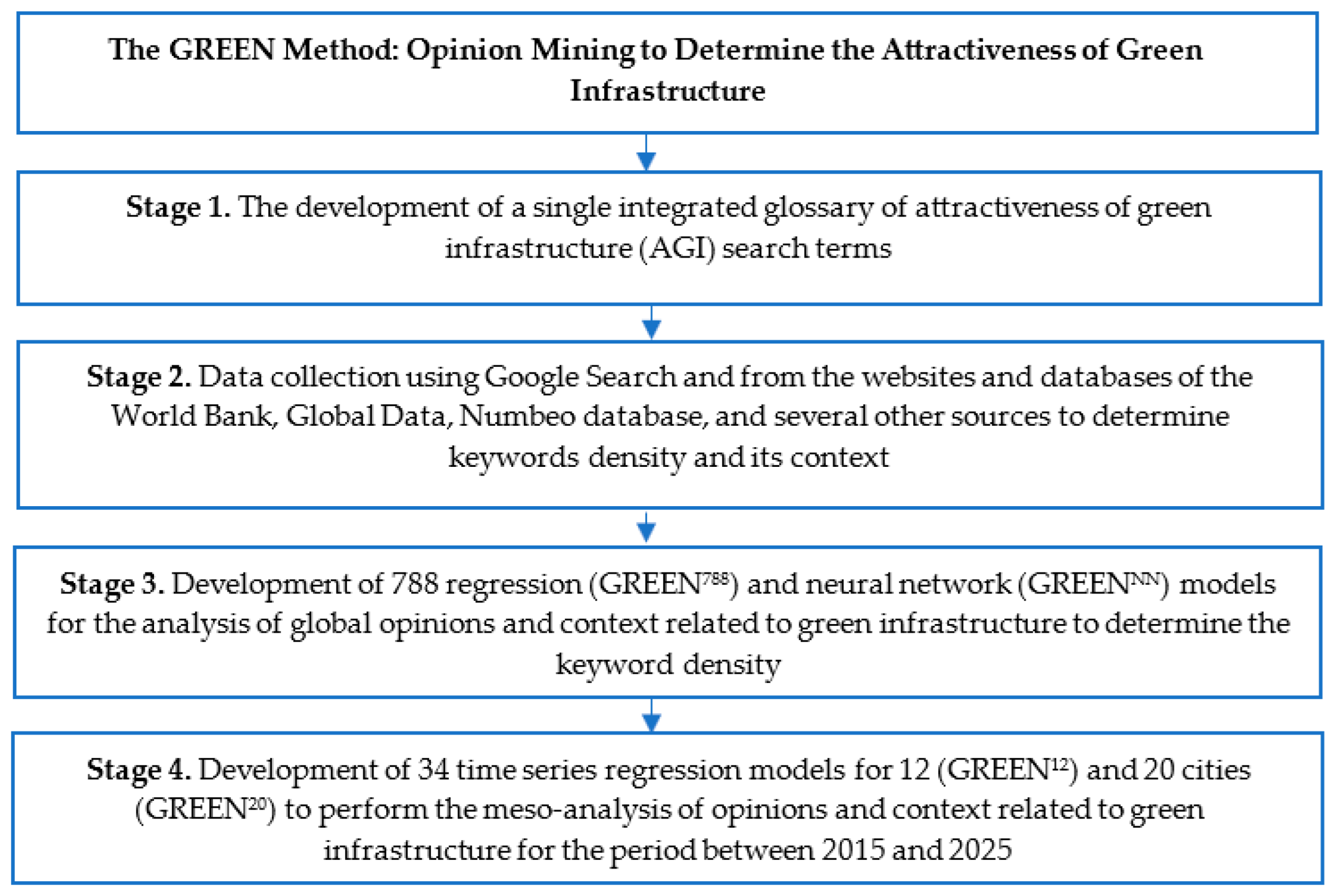
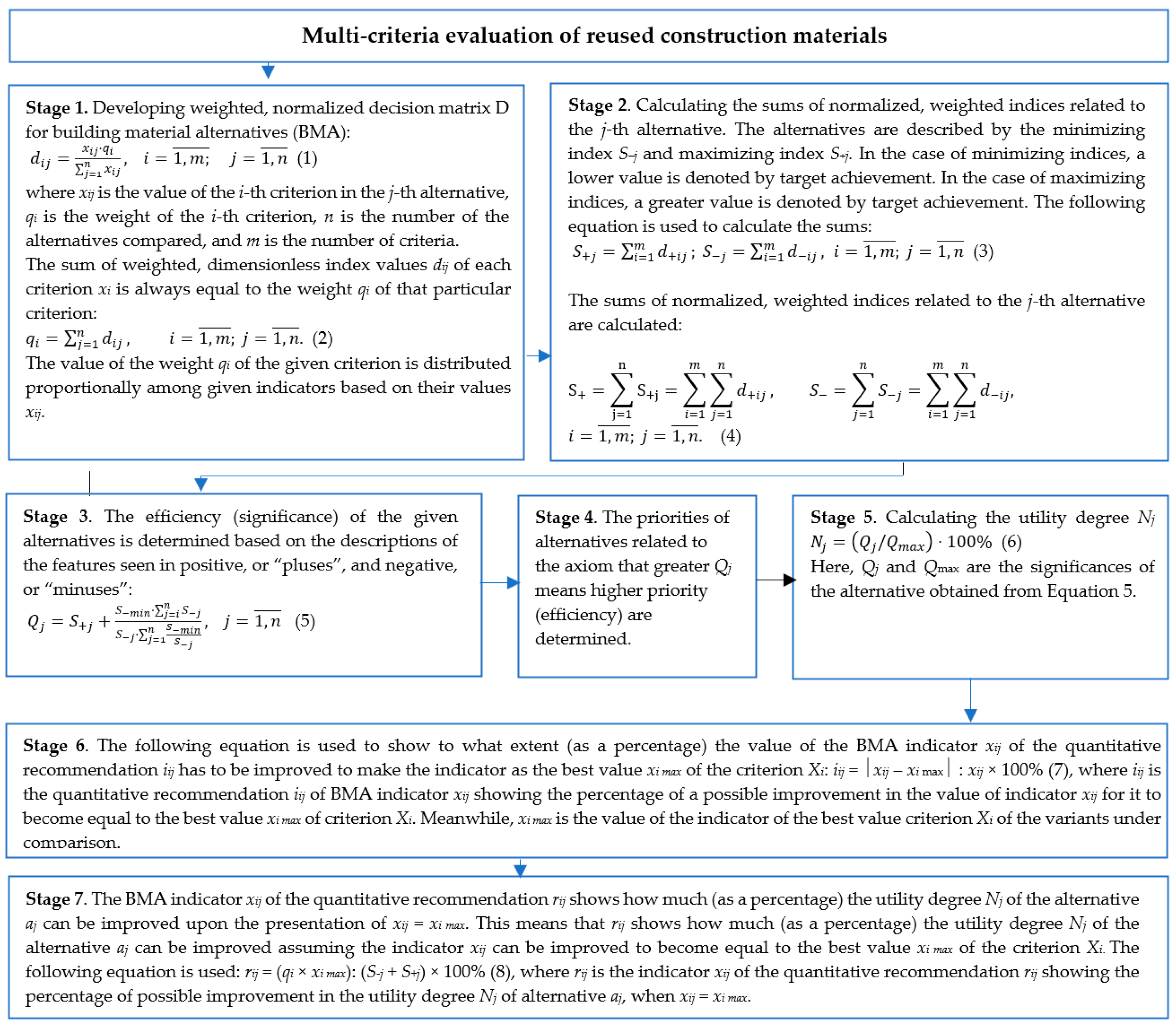
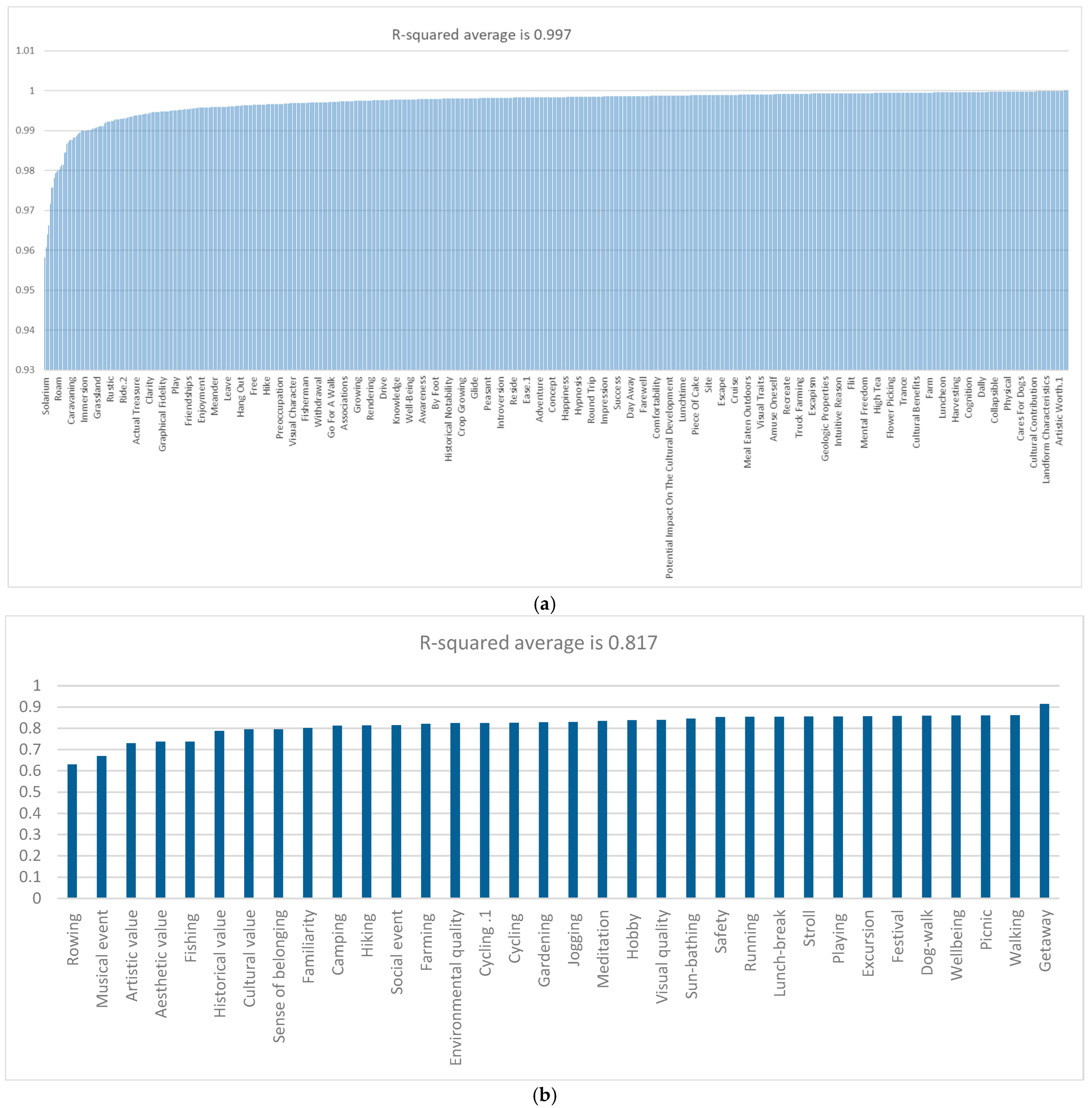
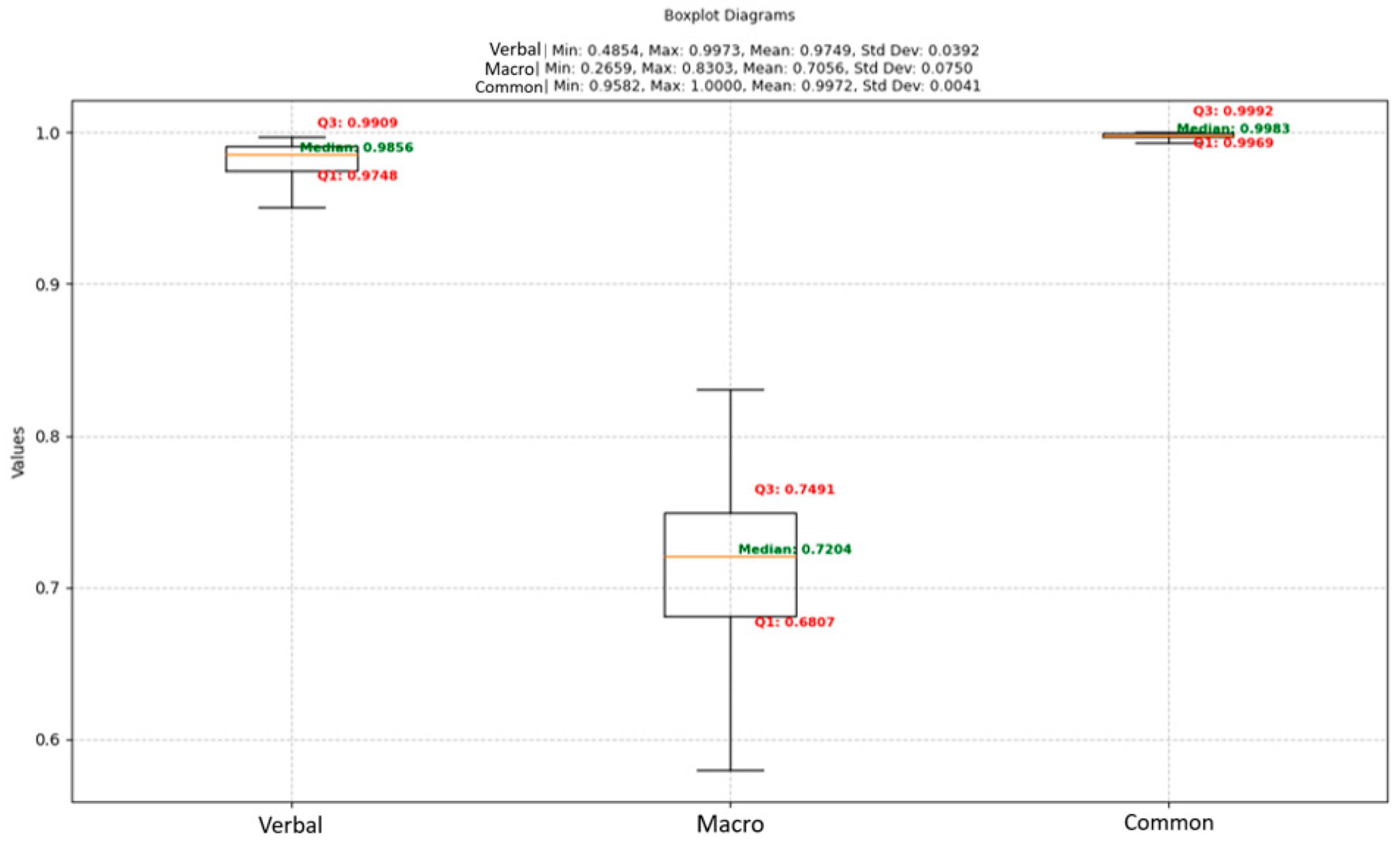
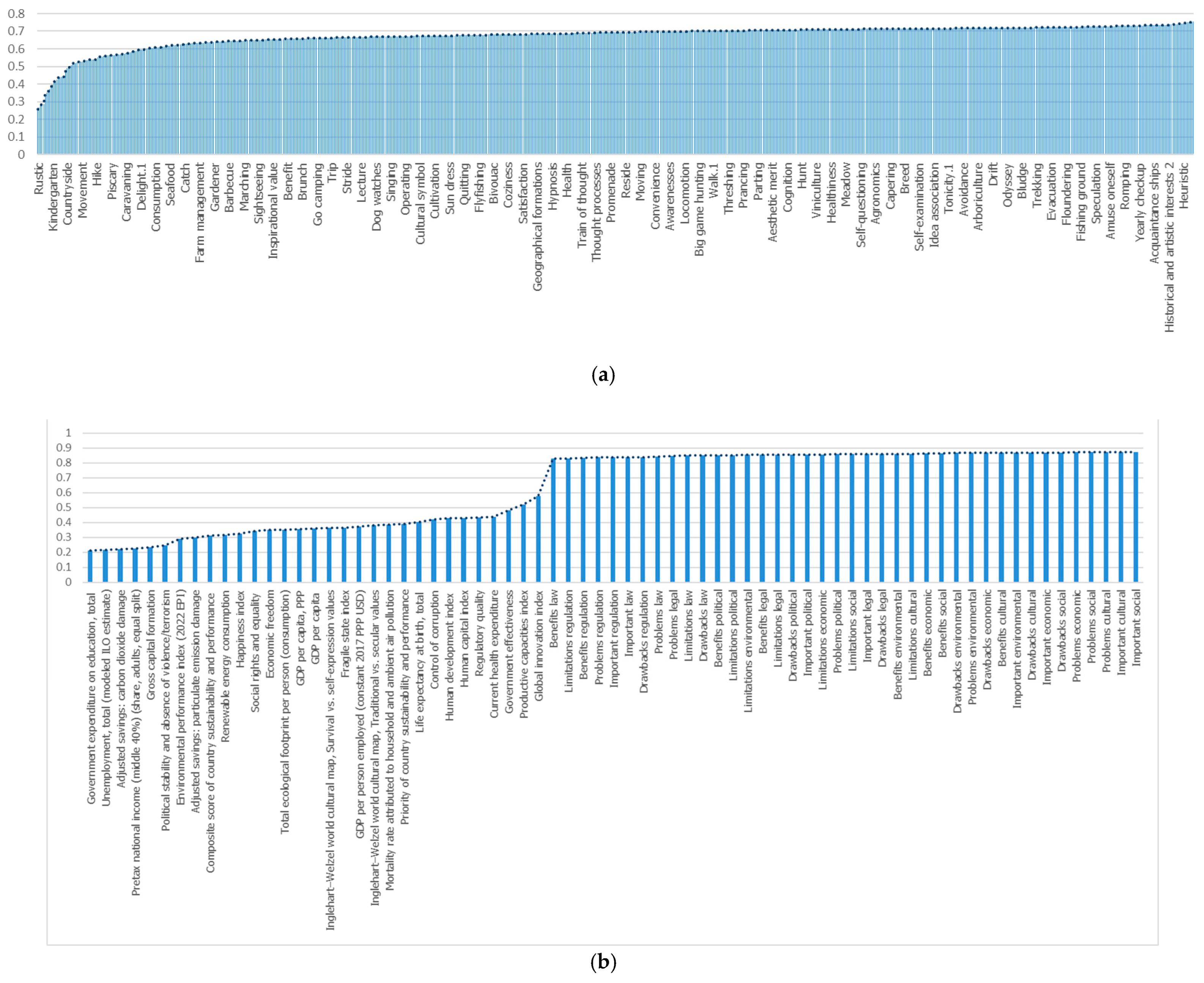
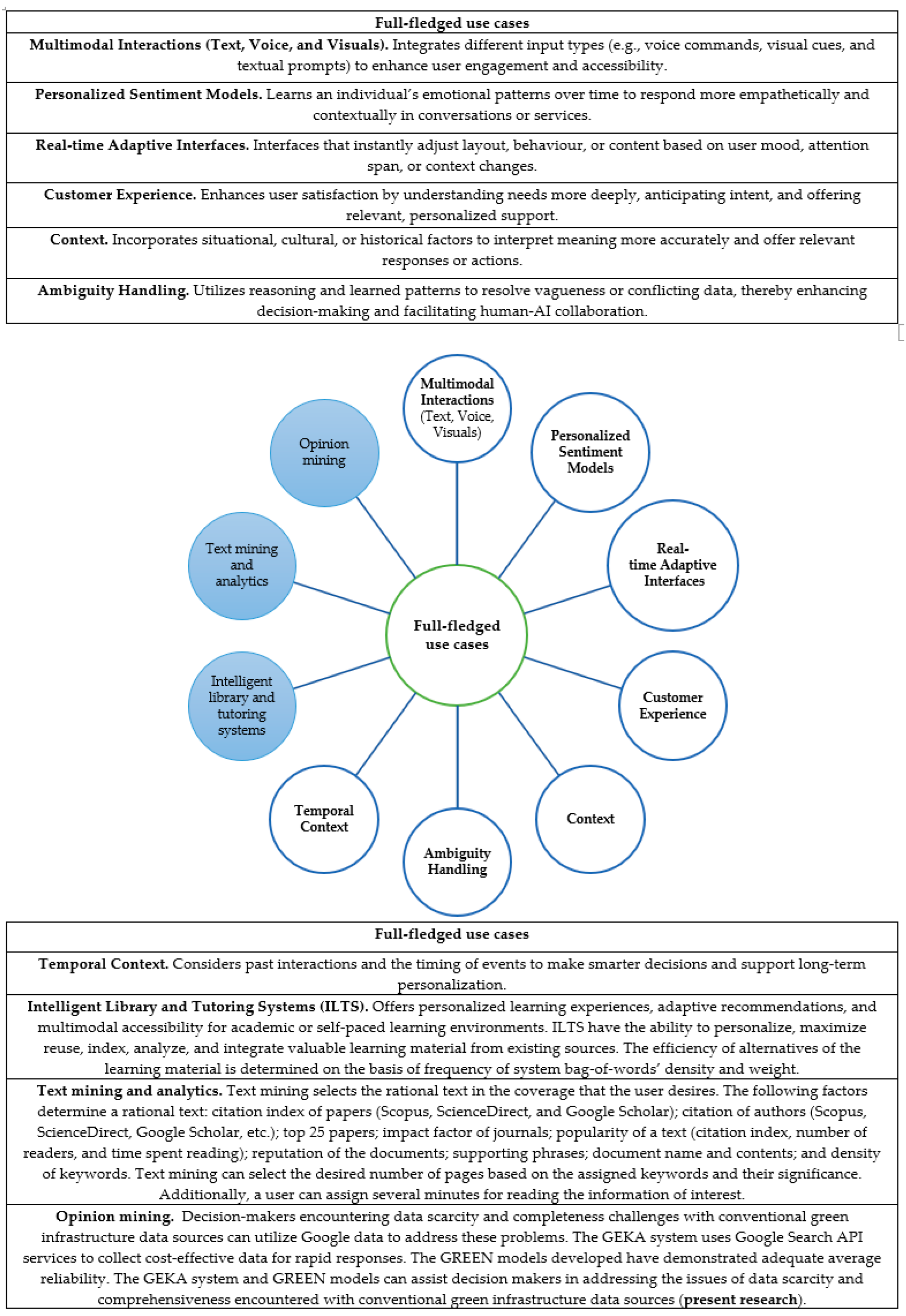
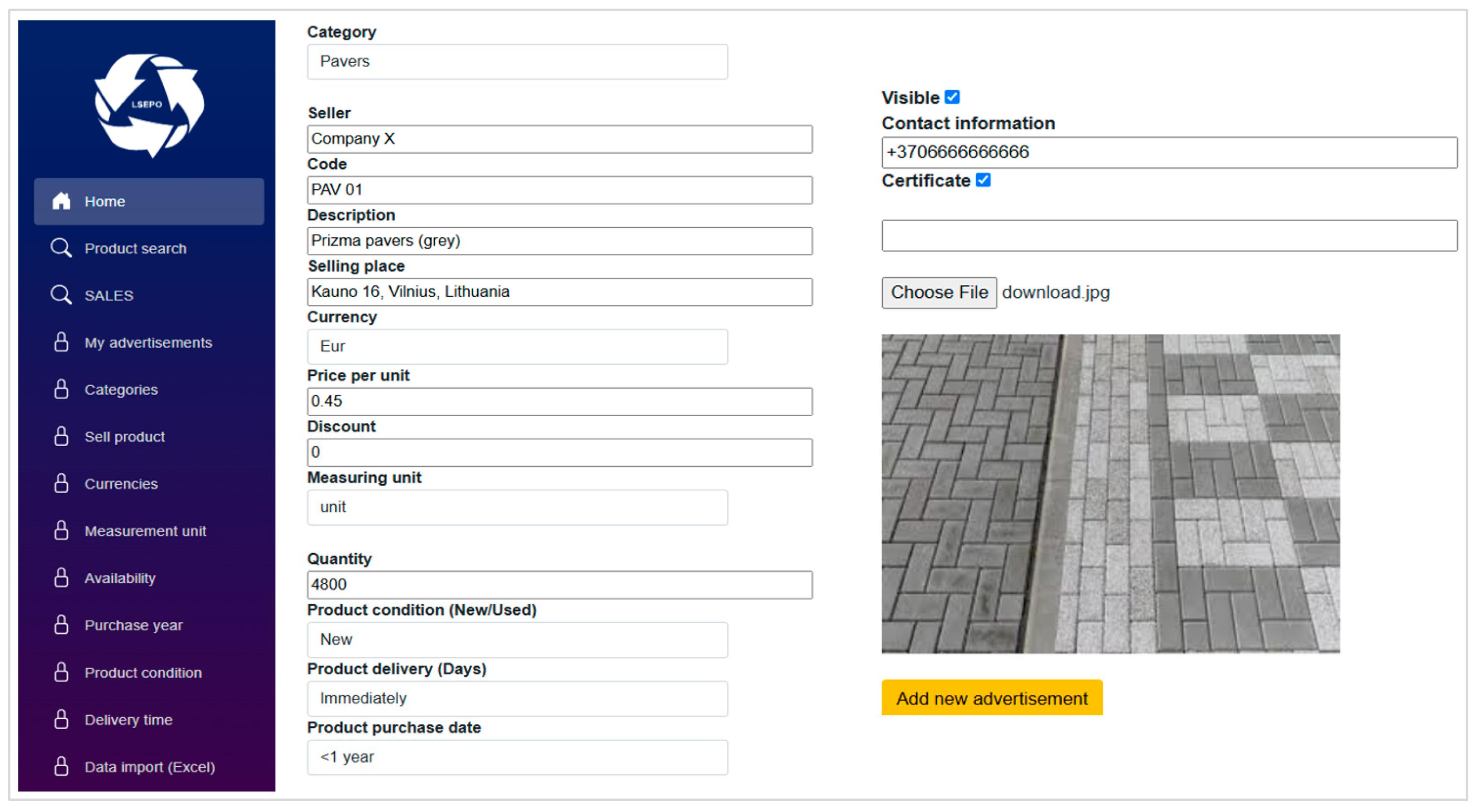

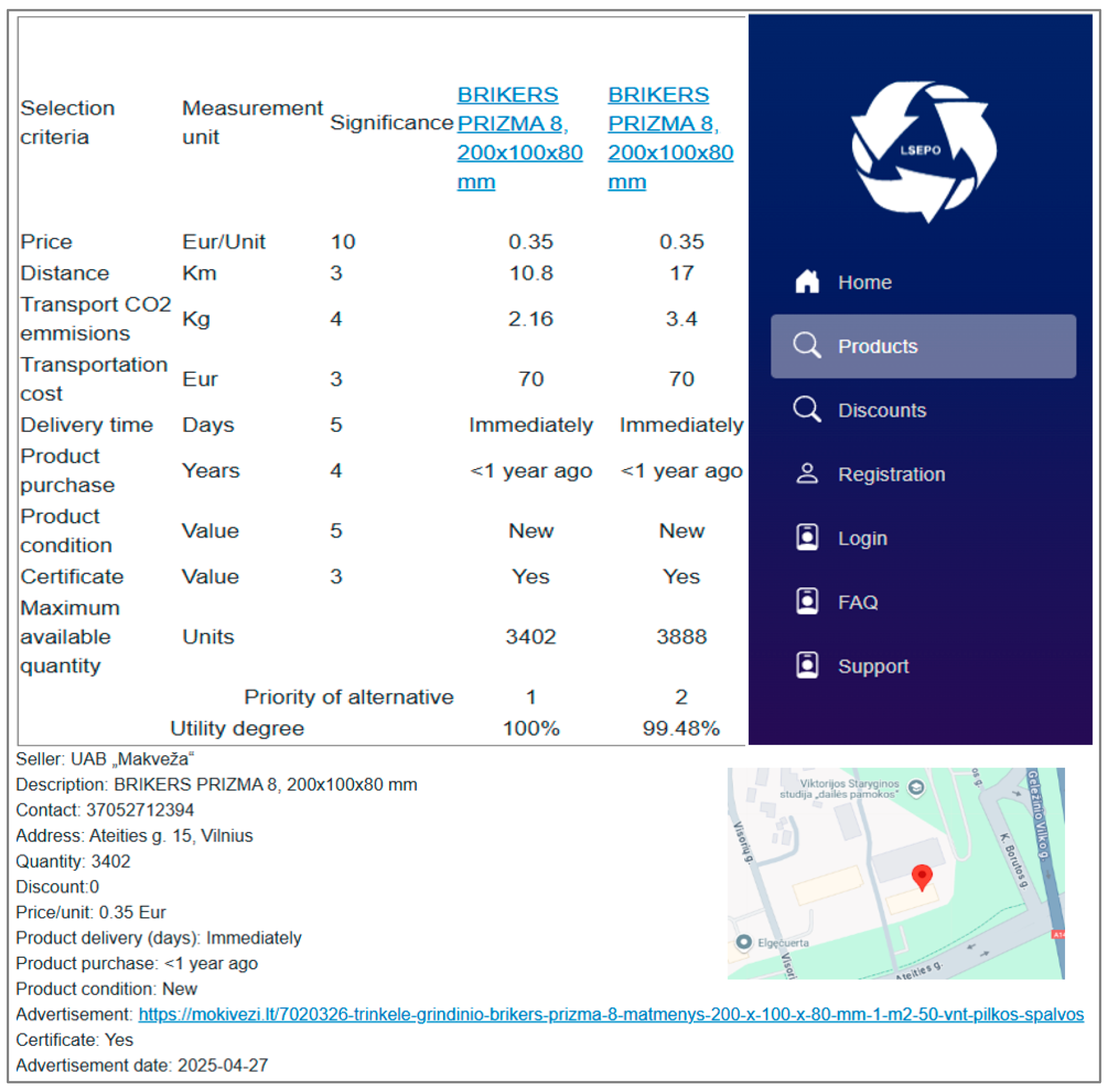
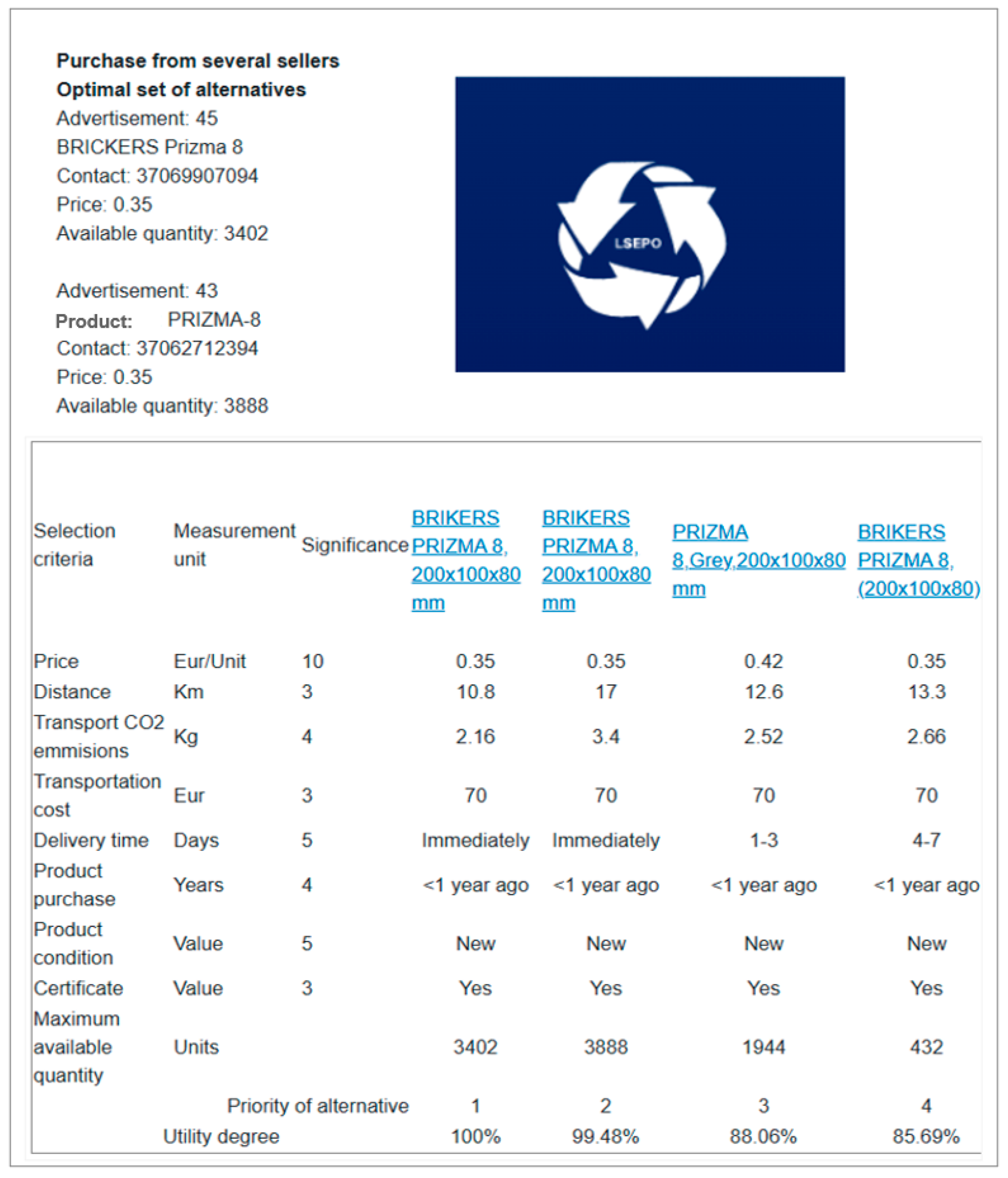
| Expert | Field of Expertise | Position | Years of Experience |
|---|---|---|---|
| E1 | Civil engineering | Professor | 30 |
| E2 | Civil engineering | Professor | 21 |
| E3 | Civil engineering | Researcher | 16 |
| E4 | Civil engineering | Professor | 18 |
| E5 | Construction management | Senior specialist | 15 |
| E6 | Construction management | Project manager | 25 |
| E7 | Construction waste management | Manager | 22 |
| E8 | Real estate development | Manager | 17 |
| No | Question | Mean | Median | Standard Deviation |
|---|---|---|---|---|
| 1. | The design and layout of the portal are user-friendly | 3.75 | 4.00 | 0.46 |
| 2. | The portal is easy to navigate | 4.00 | 4.00 | 0.00 |
| 3. | The portal works well across different browsers and devices | 4.00 | 4.00 | 0.00 |
| 4. | The portal makes it easy to upload and manage multiple materials | 3.63 | 4.00 | 0.52 |
| 5. | The portal offers enough criteria to reflect real-world decision-making needs | 3.50 | 3.50 | 0.53 |
| 6. | The filtering options (e.g., material type, quality, location) are helpful | 4.00 | 4.00 | 0.00 |
| 7. | The portal correctly identifies the information and data on reused construction materials | 4.00 | 4.00 | 0.00 |
| 8. | The portal correctly performs the search for information about the construction materials offered and relevant suppliers | 3.88 | 4.00 | 0.35 |
| 9. | The search subsystem allows users to search, filter, and compare many of building material alternatives based on price, location, delivery time, and other parameters and contact suppliers to order the building materials | 3.88 | 4.00 | 0.35 |
| 10. | The search and ranking system fairly represents materials based on quality and relevance | 3.75 | 4.00 | 0.46 |
| 11. | The listings are displayed in a way that help to compare options easily | 3.75 | 4.00 | 0.46 |
| 12. | The estimated transport distance and environmental impact information is useful | 4.00 | 4.00 | 0.00 |
| 13. | The platform correctly performs multi-criteria and multi-variate analyses and selects the most rational material alternatives and their combinations | 3.88 | 4.00 | 0.35 |
| 14. | The portal offers a valuable resource for sustainable construction practices | 4.00 | 4.00 | 0.00 |
| 15. | Overall, I am satisfied with my experience using the SOLUTION Portal | 3.75 | 4.00 | 0.46 |
| 16. | I would recommend this portal to others in construction or renovation | 3.88 | 4.00 | 0.35 |
Disclaimer/Publisher’s Note: The statements, opinions and data contained in all publications are solely those of the individual author(s) and contributor(s) and not of MDPI and/or the editor(s). MDPI and/or the editor(s) disclaim responsibility for any injury to people or property resulting from any ideas, methods, instructions or products referred to in the content. |
© 2025 by the authors. Licensee MDPI, Basel, Switzerland. This article is an open access article distributed under the terms and conditions of the Creative Commons Attribution (CC BY) license (https://creativecommons.org/licenses/by/4.0/).
Share and Cite
Kaklauskas, A.; Teixeira, E.; Xenidis, Y.; Tzioutziou, A.; Connolly, L.; Skuodis, S.; Dauksys, K.; Lepkova, N.; Tupenaite, L.; Kaklauskiene, L.; et al. Green Infrastructure: Opinion Mining and Construction Material Reuse Optimization Portal. Buildings 2025, 15, 2362. https://doi.org/10.3390/buildings15132362
Kaklauskas A, Teixeira E, Xenidis Y, Tzioutziou A, Connolly L, Skuodis S, Dauksys K, Lepkova N, Tupenaite L, Kaklauskiene L, et al. Green Infrastructure: Opinion Mining and Construction Material Reuse Optimization Portal. Buildings. 2025; 15(13):2362. https://doi.org/10.3390/buildings15132362
Chicago/Turabian StyleKaklauskas, Arturas, Elisabete Teixeira, Yiannis Xenidis, Anastasia Tzioutziou, Lorcan Connolly, Sarunas Skuodis, Kestutis Dauksys, Natalija Lepkova, Laura Tupenaite, Loreta Kaklauskiene, and et al. 2025. "Green Infrastructure: Opinion Mining and Construction Material Reuse Optimization Portal" Buildings 15, no. 13: 2362. https://doi.org/10.3390/buildings15132362
APA StyleKaklauskas, A., Teixeira, E., Xenidis, Y., Tzioutziou, A., Connolly, L., Skuodis, S., Dauksys, K., Lepkova, N., Tupenaite, L., Kaklauskiene, L., Kildiene, S., Zidoniene, J., Milevicius, V., & Naimavicius, S. (2025). Green Infrastructure: Opinion Mining and Construction Material Reuse Optimization Portal. Buildings, 15(13), 2362. https://doi.org/10.3390/buildings15132362










